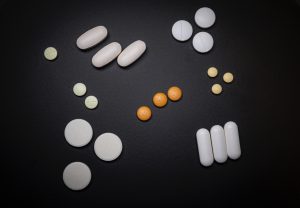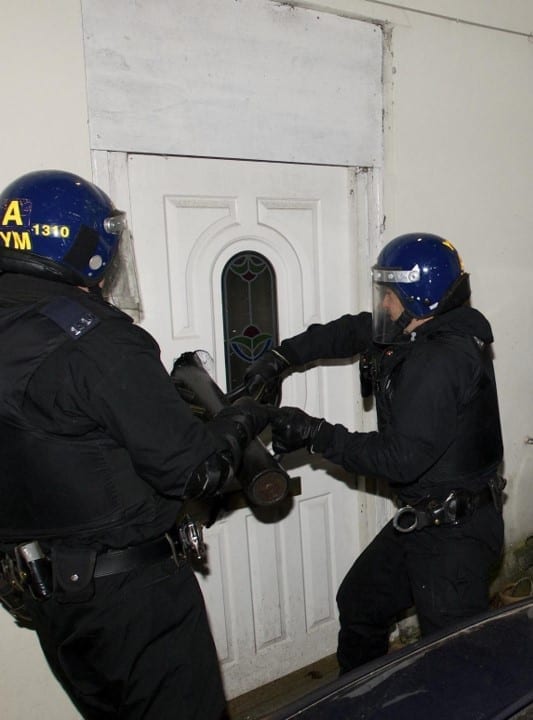Education, treatment options, and local community support can help reduce the demand for illegal drugs and ultimately diminish the need for DEA raids.
Over the past ten years, the landscape of illegal drug labs across the United States has seen a heightened amount of police resistance. The Drug Enforcement Administration (DEA) has been at the forefront of combating this pressing issue, conducting numerous raids across various cities in an effort to get illegal drugs off the streets by cutting suppliers off. This article aims to summarize the data we have collected regarding the cities that have been the most affected by illegal drug labs, highlighting trends, statistics, and potential implications for public safety.
Overview of the DEA’s Role
The DEA is the primary federal agency responsible for enforcing the controlled substance bans, laws, and regulations of the United States. Its mission includes combating drug trafficking and illegal drug operations, including the dismantling of illegal drug labs. Through strategic partnerships with local law enforcement agencies, the DEA has executed thousands of raids over the past 10 years to curb the accumulation of illicit drugs in the United States.
Cities with the Most Raids
Between 2014 and 2023, several cities across the United States experienced significant activity in terms of DEA raids targeting illegal drug labs. Below is a breakdown of the cities that had the most drug lab raids over the past 10 years, highlighting the extent of illegal drug production and the DEA’s efforts to dismantle these operations.
- Kalamazoo, Michigan – With a total of 29 illegal drug lab raids from 2014 to 2023, Kalamazoo tops the list with the most illegal drug raids conducted by the DEA. Most of these occurred in the earlier part of the decade, particularly in 2014 (10 raids) and 2015 (15 raids). In the later years, raids on illegal drug operations significantly slowed, with no raids reported between 2021 and 2023. However, Kalamazoo remains a hotspot in this data set, reflecting a strong early presence of drug production in the region.
- Akron, Ohio – Akron follows closely behind Kalamazoo, with 27 raids during this 10-year period. Like Kalamazoo, most of the illegal lab activity was concentrated in the first few years, peaking in 2014 with 10 raids and in 2015 with 12 raids. After 2016, the number of raids dwindled, with only a single raid reported in 2020. The initial high volume suggests that law enforcement was heavily focused on the city during those years, which contributed to the lower rate of raids in subsequent years.
- Milton, Florida – Milton saw a total of 21 illegal drug lab raids during the 10-year period, most of which occurred in 2014 (9 raids) and 2015 (10 raids). After 2016, there were no recorded raids, indicating that the DEA may have been successful in curbing the production of drugs in this small Florida city.
- Houston, Texas, and Port Huron, Michigan – Both of these cities tie for the fourth spot with 20 illegal drug lab raids each. Houston experienced a surge in raids in the latter half of the decade, with notable activity from 2020 to 2023, showing that recent illegal drug operations have increased. The city recorded its highest number of raids in 2022 (7 raids). Port Huron, on the other hand, saw most of its activity earlier, with 2014 (5 raids) and 2015 (9 raids) being the peak years, highlighting that illegal drug operations are becoming fewer.
- Jackson, Michigan – Jackson had 19 raids over this 10-year period, with most of the activity occurring between 2014 and 2016. The peak year was 2016, with 5 raids, and after a period of inactivity, a single raid was reported in 2020. The trend reflects a shift in focus or possibly the dismantling of significant drug labs in the area, successfully reducing the amount of illegal substances on our streets.
- Christiansburg, Virginia and Flint, Michigan – Both cities recorded 18 drug lab raids over 10 years. In Christiansburg, most of the activity occurred between 2014 and 2017, with 2016 seeing the highest number of raids (6). Flint, a city known for its economic struggles, experienced most of its raids in 2016 (9 raids) but saw fewer raids afterward.
- Battle Creek, Michigan and Rockingham, North Carolina – These cities tie with 17 drug lab raids each. Battle Creek’s peak year was 2015, with 12 raids, while Rockingham saw a more distributed set of raids between 2014 and 2018. Both cities had significant DEA activity in the earlier years, but saw no recorded raids after 2018, showing that the amount of illegal drug operations in both areas has been reduced significantly.
- Lexington, South Carolina – With 16 total raids, Lexington’s most active years were 2014 and 2015. The city reported periodic raids until 2021, after which no further activity was recorded, demonstrating the DEA’s success.
- Mount Vernon, Illinois – Mount Vernon recorded 14 drug lab raids, but the bulk of this activity happened in a single year, 2015, with 14 raids. After that, no further raids were recorded, suggesting a sharp decline in illegal lab operations in the area, proving the DEA’s work has been successful.
Trends and Observations
Increase in Synthetic Drugs
One notable trend in the past decade is the rise of synthetic drugs throughout the U.S., such as fentanyl and methamphetamine. These substances are often easier and cheaper to produce, however, they are significantly more dangerous and contribute to a high number of deaths every year. Cities with high rates of synthetic drug production have experienced more DEA raids as law enforcement works to mitigate the associated risks and keep the public safe.

Impact of the Opioid Crisis
The opioid epidemic has profoundly impacted many cities across the United States in the past 10 years. The DEA has responded with targeted raids in areas heavily affected by opioid addiction and trafficking in an effort to stop the production and distribution of these dangerous substances. Cities like Philadelphia and Detroit have become critical battlegrounds in the DEA’s fight against the opioid crisis.
Collaboration with Local Law Enforcement
The DEA’s effectiveness in conducting raids is often enhanced by collaboration with local law enforcement agencies, demonstrating that by working together we can reduce the number of illegal drug operations in the U.S. By pooling resources and sharing intelligence, these partnerships can lead to more successful operations, saving lives and protecting our cities. Cities with strong local law enforcement collaboration tend to see more successful raids and dismantling of illegal drug labs.
Implications for Public Safety
The increase in illegal drug labs and the DEA’s response have significant implications for public safety. Raids not only disrupt the production and distribution of illicit drugs but also address the associated violence and crime that often accompany drug trafficking, which in turn keeps our communities safer. However, the existence of these labs poses immediate dangers to the public, including explosions, toxic exposure, and environmental contamination.
Community Outreach and Prevention
In addition to law enforcement efforts, community outreach and prevention programs play a vital role in addressing the underlying issues of drug abuse and preventing drugs from affecting our communities. Education, treatment options, and local community support can help reduce the demand for illegal drugs and ultimately diminish the need for DEA raids.


Join the conversation!